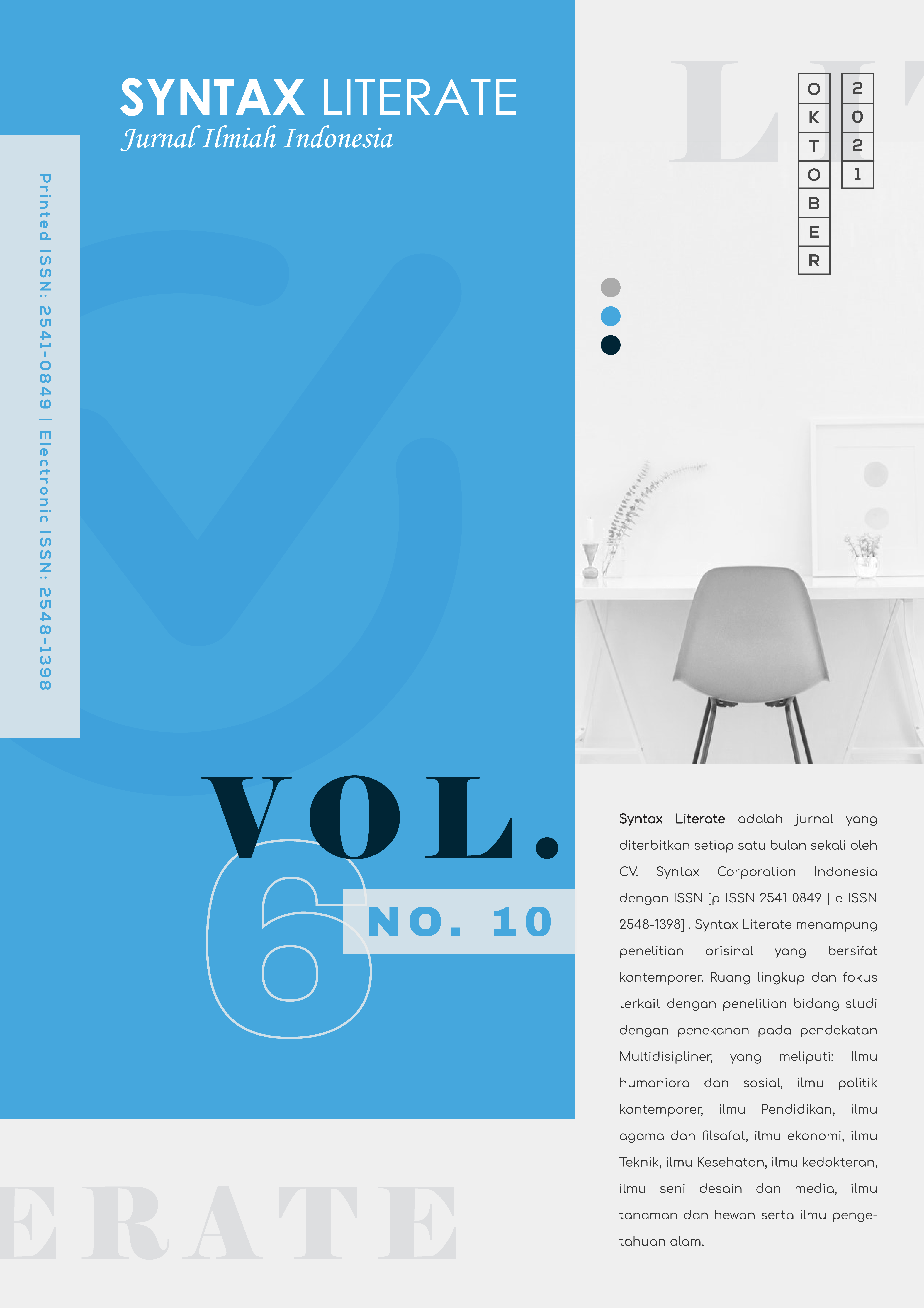Analisis Motivasi Belajar, Dukungan Atasan, Kompetensi Trainer dan Motivasi Transfer Sebagai Determinan pada Transfer Pelatihan
Abstract
Tujuan penelitian ini adalah untuk mengetahui pengaruh motivasi belajar, kompetensi pelatih, dukungan supervisor dan motivasi transfer terhadap transfer pelatihan. Penelitian dilakukan pada karyawan PT Indonesia Power. Sampel yang diambil sebanyak 229 responden. Pengambilan sampel dalam penelitian ini menggunakan teknik random sampling. Pengumpulan data dilakukan dengan kuesioner dengan menggunakan skala likert 5 poin untuk mengukur 26 item pertanyaan. Teknik analisis yang digunakan adalah Structural Equation Modelling (SEM). Hasil analisis menunjukkan bahwa variabel motivasi belajar, kompetensi pelatih berpengaruh terhadap transfer pelatihan karyawan PT Indonesia melalui mediasi transfer motivasi dan selanjutnya ditemukan bahwa variabel dukungan supervisor tidak berpengaruh terhadap transfer pelatihan. Manajemen harus memperhatikan 3 variabel tersebut dengan tujuan agar karyawan dapat mentransfer pengetahuan dan keterampilan baru yang dipelajari dalam pelatihan dalam konteks pekerjaan.
Downloads
References
Augusty, F. (2006). Metode Penelitian Manajemen. Google Scholar
Bhatti, Anam, Rehman, Shafique Ur, & Rumman, Jumana Basheer Abu. (2020). Organizational capabilities mediates between organizational culture, entrepreneurial orientation, and organizational performance of SMEs in Pakistan. Entrepreneurial Business and Economics Review, 8(4), 85–103. Google Scholar
Broad, Mary L. (2005). Beyond transfer of training : engaging systems to improve performance. 255. Google Scholar
Chiaburu, Dan S., & Lindsay, Douglas R. (2008). Can do or will do? the importance of self-efficacy and instrumentality for training transfer. Human Resource Development International, 11(2), 199–206. https://doi.org/10.1080/13678860801933004 Google Scholar
Ghozali. (2017). Model Persamaan Struktural Konsep dan aplikasi dengan Program AMOS 24 Update Bayesian SEM. Google Scholar
Ghozali. (2018). Aplikasi Analisis Multivariate Dengan Program IBM SPSS 25. Google Scholar
Hair. (2019). Multivariate Data Analysis : Multivariate Data Analysis : Why multivariate data analysis ?
Homklin, Tassanee, Takahashi, Yoshi, & Techakanont, Kriengkrai. (2014a). The influence of social and organizational support on transfer of training: evidence from T hailand. International Journal of Training and Development, 18(2), 116–131. Google Scholar
Homklin, Tassanee, Takahashi, Yoshi, & Techakanont, Kriengkrai. (2014b). The influence of social and organizational support on transfer of training: Evidence from Thailand. International Journal of Training and Development, 18(2), 116–131. https://doi.org/10.1111/ijtd.12031 Google Scholar
Kirwan, Cyril. (2010). Improving Learning Transfer. In Human Resource Management International Digest (Vol. 18). https://doi.org/10.1108/hrmid.2010.04418dae.002
Kontoghiorghes, Constantine. (2008). Predicting Motivation to Learn and Motivation to Transfer Learning Back to the Job in a Service Organization: A New Systemic Model for Training Effectiveness. Performance Improvement Quarterly, 15(3), 114–129. https://doi.org/10.1111/j.1937-8327.2002.tb00259.x Google Scholar
Madagamage, G. T., Warnakulasooriya, B. N. F., & Wickramasuriya, H. V. A. (2015). Factors influencing motivation to transfer training: an empirical study of a government sector training program in Sri Lanka. Tropical Agricultural Research, 26(1), 12. https://doi.org/10.4038/tar.v26i1.8068 Google Scholar
Nielson, Bryant. (2018). Role of the Trainer: Engagement.
Reio, Thomas, & Ghosh, Rajashi. (2009). Antecedents and Outcomes of Workplace Incivility. Computational Complexity, 2(1), 1–9. https://doi.org/10.1002/hrdq Google Scholar
Salleh, Nik Sarina Nik Md, Amin, WAAWM, & Mamat, Ibrahim. (2017). Employee Readiness, Training Design and Work Environment in Influencing Training Transfer Among Academic Staffs of Uitm. International Journal of Academic Research in Business and Social Sciences, 7(10), 275–290. Google Scholar
Sharma, Subhash, Mukherjee, Soumen, Kumar, Ajith, & Dillon, William R. (2005). A simulation study to investigate the use of cutoff values for assessing model fit in covariance structure models. Journal of Business Research, 58(7), 935–943. https://doi.org/10.1016/j.jbusres.2003.10.007 Google Scholar
Singha, Krishnamati. (2016). Training: A Strategic Tool For Boosting Up Skills Of Lis Professional – A Case Study Of Nit Silchar. Google Scholar
Towler, Annette, & Dipboye, Robert L. (2006). Effects of trainer reputation and trainees’ need for cognition on training outcomes. The Journal of Psychology, 140(6), 549–564. Google Scholar
Villela, lucia maria aversa. (2013). Intrinsic Motivation to Learn: The nexus between psychological health and academic success. Journal of Chemical Information and Modeling, 53(9), 1689–1699. Google Scholar
Wen, Melody Ling Yu, & Lin, Danny Yung Chuan. (2014). Trainees’ characteristics in training transfer: The relationship among self-efficacy, motivation to learn, motivation to transfer and training transfer. International Journal of Human Resource Studies, 4(1), 114. Google Scholar
What is Transactional Leadership? How Structure Leads to Results. (2018). Google Scholar
Copyright (c) 2021 Nanang Kurniawan, Ahyar Yuniawan

This work is licensed under a Creative Commons Attribution-ShareAlike 4.0 International License.











